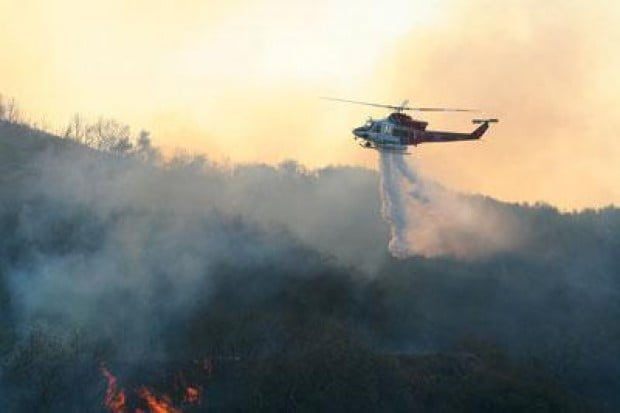
“Malibu is always going to have an elevated fire risk.” This statement comes from Malibu’s recently released Community Wildfire Protection Plan (CWPP).
Based on topography, fuels and weather, more fires will visit our area and the best time for the community to prepare is now. The draft plan also signals that climate change is expected to worsen existing wildfire hazards over the coming decades.
To prepare for future wildfire disasters that are inevitable, according to the CWPP, the City of Malibu hired wildfire safety consultants Jensen Hughes to identify critical infrastructure and hazards and then make recommendations.
The CWPP “provides a roadmap of actions for a community to address wildfire threat,” according to outgoing Malibu fire liaison Jerry Vandermeulen, who spoke at a virtual community meeting last week.
“It may open up state and federal funding opportunities to implement the plan,” Vandermeulen added, because if projects are identified, it’s easier to ask for grant funding.
It was noted that primary land management agencies adjacent to Malibu do not have missions that allow the development of landscape vegetation management such as brush clearance. Although the plan does state a goal to coordinate with outside agencies (“Establish and maintain a spatial database of planned and completed fuel treatments within the city. Include other entities within and adjacent to the city who are also managing vegetation. This would include Los Angeles County, National Park Service, MRCA, Caltrans and others), consultants at the meeting put emphasis on residents doing their part to keep vegetation controlled.
“The City of Malibu has very little land under its control,” according to Jensen Hughes consultant David Kerr, who is a wildland fire management expert with 34 years of experience. “The ability to develop a more wildfire resilient community lies with the residents of Malibu through home hardening and development of defensible space.” This means the burden will fall on homeowners to take responsibility for their own properties. Unfortunately, the report indicates, this is not happening to a great degree.
After two public meetings in February 2020 and an online survey, Kerr reported that of the 255 households that responded, 58 percent said they thought they complied with making a 100-foot defensible space around their home.
“That tells me that 42 percent of the community that responded believe they do not have acceptable defensible space,” Kerr said. “That, to me, is a high number for people who took the time to respond—those are typically people who are the most concerned about fire. Twenty-eight percent stated they have single-pane windows. They are much more compromised in a wildfire. A hardening recommendation is that residences have dual-paned windows.”
Kerr reported the community spoke loudly about holding homeowners accountable for their own property compliance.
“County fire needs to step up the level of inspection under public resource code 4291 as far as hardening structures,” he said.
Since homeowners will shoulder the burden to keep structures fire resilient, a checklist is available from CalFire at readyforwildfire.org. Details on structural ignitability can be found in Chapter 7A of the California Building Code and Chapter 49 of the LA County Code. “There are simple low-cost actions listed you can take to increase the resiliency of a structure,” according to Kerr.
Another troubling issue for Kerr was landscaping.
“It’s easy to find homes with lack of any sort of vegetation control,” Kerr said. “To me, it’s the biggest issue to be addressed. There’s an incredible number of non-native and invasive species of vegetation in the area from private property encroaching on public lands. Looking at your property and seeing what can be done on a personal level to make your home more resilient is critical to the fire resiliency of Malibu.”
Climate change was addressed in the CWPP, which shows the primary fall fire season indicates fuel moisture decreasing, which in turn increases the number of extreme fire danger days. “Projection modeling indicates it’s only going to get worse,” according to the report.
During public comment at the virtual CWPP meeting, a resident identified as Judy questioned the science gathering in the report especially concerning brush clearance.
“Science shows destroying chaparral doesn’t work. Home hardening works,” the resident said. “Chaparral is not an evil thing. It does not cause wildfires.” Judy suggested wind is the main culprit. Kerr clarified any chaparral to be removed would be recommended non-native/invasive.
“It doesn’t reflect our eco-system well,” the expert claimed.
Vandermeulen commented the CWPP “is not going to take care of everything, nor will it take the place of other priorities,” citing the undergrounding of utilities “would be wonderful. It’s not in here because probably as a city it will be difficult for us to attain,” adding “the plan gives us a good starting place.”
The draft CWPP is available online at malibucity.org/firesafety. Comments on the draft are accepted through April 9.